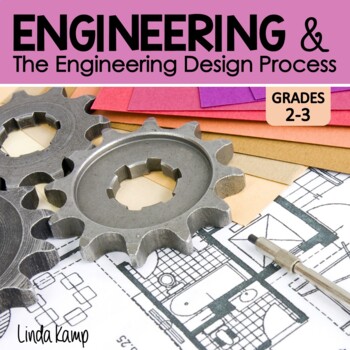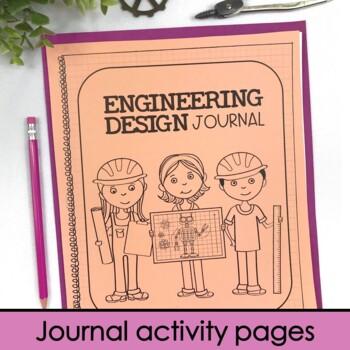Engineering Design Process 2nd Grade 3rd Grade Science & STEM Unit NGSS
- Zip
What educators are saying
Also included in
- Teaching second grade science aligned with the Next Generation Science Standards is quite challenging without quality resources to guide you. These in-depth units address all 2nd grade NGSS topics and enable you to plan and teach high-engagement, three-dimensional science lessons. The six units in tPrice $105.00Original Price $132.00Save $27.00
- This second and third grade engineering and the engineering design process bundle is an in-depth, 4-week science resource carefully designed with literally everything you need to teach NGSS and many state science standards that address science and engineering practices, the engineering design procesPrice $27.00Original Price $34.00Save $7.00
- Teaching third grade science, aligned the Next Generation Science Standards, is quite challenging without quality resources to guide you. These in-depth science units address all the 3rd grade NGSS topics and enable you to plan and teach highly-engaging lessons that don’t take hours to plan becausePrice $106.00Original Price $132.00Save $26.00
Description
Introduce your students to engineering and the engineering design process in a creative and hands-on way! This second and third grade engineering design unit addresses NGSS engineering standards as well as science and engineering practices through a series of high-interest lessons and labs.
This unit is also available bundled with a digital version and narrated lesson slides. CLICK HERE.
This 20-day unit centers around 6 engaging lessons in a content-rich teaching Power Point. The lessons are followed by journal response activities, partner discussion, and a hands-on lab for each lesson.
Each lab teaches a step of the engineering design process and builds on the previous lesson. A culminating design project at the end of the unit gives students the opportunity to apply what they have learned.
Thoughtfully detailed lesson plans make planning, teaching, and assessing easy. Focus wall resources, posters, objectives cards, and more support each lesson.
Unit Components
- Teacher Guide & Planning Binder with Unit Overview and Pacing Guide
- 6 Detailed, step-by-step, scripted lessons
- 6-Lesson teaching Power Point with extension activity slides after each lesson.
- 6 Hands-on engineering/STEM labs
- Guiding questions, learning target posters, lesson objective cards
- Full page vocabulary posters
- Full page engineering design process posters
- Student journal with follow-up practice pages for each lesson
- Quick Check Quizzes/Exit Tickets in 2 formats for each lesson (short written response and fill in the blank)
- Final Assessment/Unit Test with optional pages for differentiation
- Answer keys for all resources
- Unit materials list
- Standards alignment pages
- Related read aloud book list
- Video links to support each lesson
- Bonus bulletin board set
Lesson Topics
Lesson 1: What is Engineering?
Lesson 2: The Engineering Design Process
Lesson 3: Engineers Use Technology
Lesson 4: Natural & Man-Made Materials
Lesson 5: Biomimicry: Engineering Inspired by Nature
Lesson 6: Designing Solutions
Lab Experiments/ Investigations
Students explore and explain the steps of the engineering design process, identify examples of biomimicry, create diagrams, build models, evaluate designs, and plan and build a solution to a real-world problem.
· Draw a Blueprint with Measurements
· Create a Design Manual
· Evaluate a Design
· Gather Data & Graph: Natural and Man-Made Materials
· Build a Model Featuring Biomimicry
· Design a Wildlife Crossing
Included Engineering Task Card Centers
Reinforce science content as students practice math & literacy skills:
Applying vocabulary
Biomimicry Match
Math & engineering word problems
Please see the preview for details and pictures of all resources included in this unit.
CLICK HERE for a list of materials needed to do the investigations & STEM labs.
Note: This is a very large unit that downloads as a zipped (ZIP) folder with 4 separate files inside. You will need to “unzip” the folder to access and open the files correctly. Click here for directions to open a ZIP file.
Happy teaching!
Linda Kamp
Around the Kampfire
Additional 2nd and 3rd grade science resources:
Second Grade Science Yearlong Curriculum Bundle
DIGITAL Second Grade Science Bundle
Third Grade Science Yearlong Curriculum Bundle
DIGITAL Third Grade Science Bundle
Click here for all Second Grade science units
Click here for all Third Grade science units
Terms of Use
© Linda Kamp. This product may not be posted on a public website or shared Drive where others can download it. It may not be used on Outschool or any commercial teaching or tutoring platform. You may not translate or resell this resource.








